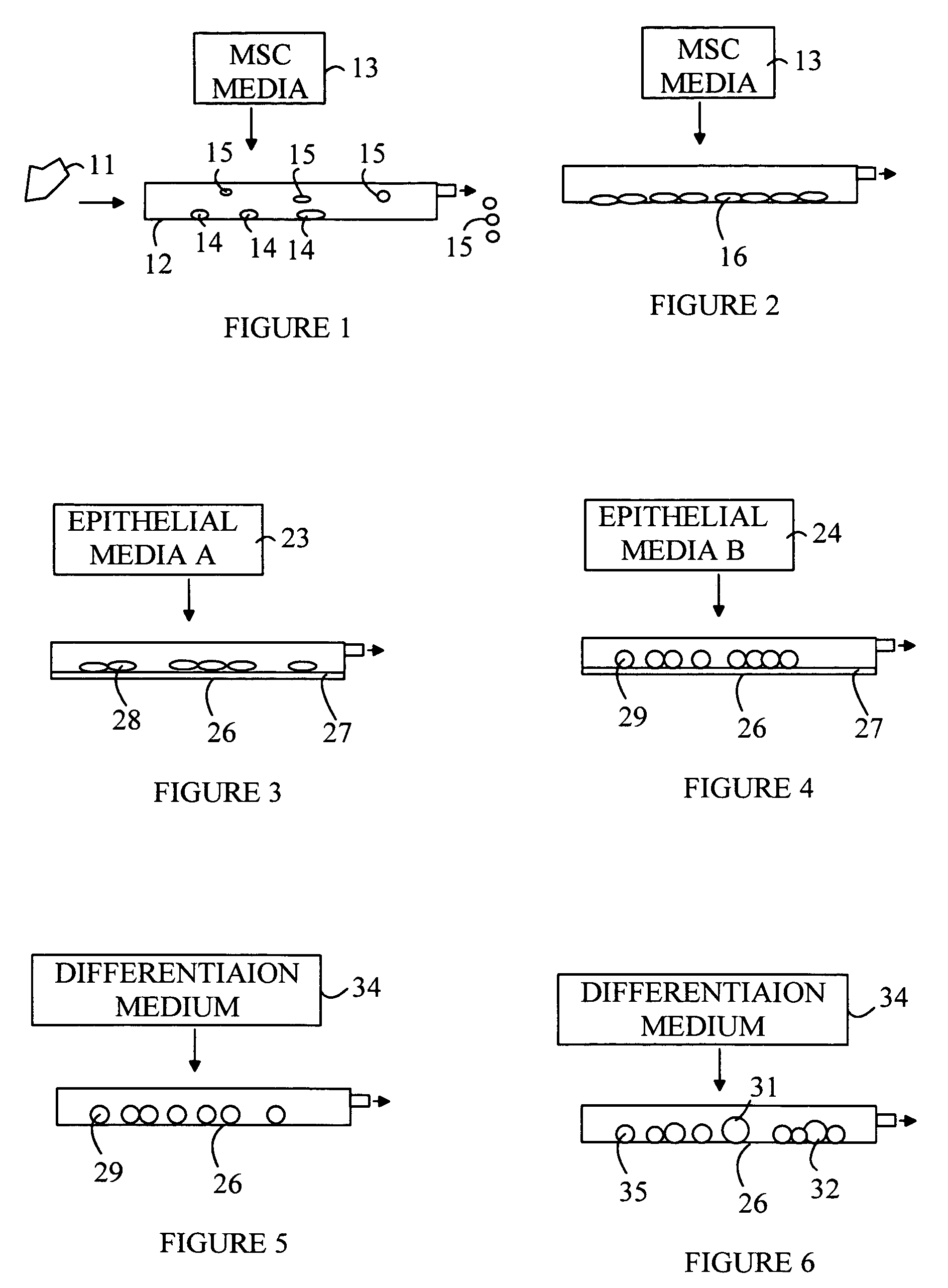Isolation and purification of human insulin producing cells for the treatment of insulin dependent diabetes
a technology of insulin dependent diabetes and purification, which is applied in the field of isolation and purification of human insulin producing cells for the treatment of insulin dependent diabetes, can solve the problems of insufficient control of blood sugar of diabetic patients, significant disability and death, and numerous medical conditions including blindness and death
- Summary
- Abstract
- Description
- Claims
- Application Information
AI Technical Summary
Benefits of technology
Problems solved by technology
Method used
Image
Examples
Embodiment Construction
[0010] The present invention utilizes a three-step approach to providing insulin islet cells for transplantation into the patient. In the first step, mesenchymal stem cells (MSCs) from the patient are purified and amplified in numbers. In the second step, the purified MSCs are differentiated into epithelial stem cells (ESCs). In the final step, the ESCs are differentiated into MSCs.
[0011] MSCs are pluripotential stem cells found in a number of locations including the bone marrow. The MSCs are capable of differentiating into any of the specific types of mesenchymal or connective tissues depending upon the growth conditions to which these cells are subjected. These cells are present at very low concentrations in the bone marrow, and hence, the MSCs must be isolated and substantially amplified by growth in vitro to provide a significant population of MSCs that can be utilized for the remaining steps of the procedure. It should be noted that the amplification growth step must not hampe...
PUM
 Login to View More
Login to View More Abstract
Description
Claims
Application Information
 Login to View More
Login to View More - R&D
- Intellectual Property
- Life Sciences
- Materials
- Tech Scout
- Unparalleled Data Quality
- Higher Quality Content
- 60% Fewer Hallucinations
Browse by: Latest US Patents, China's latest patents, Technical Efficacy Thesaurus, Application Domain, Technology Topic, Popular Technical Reports.
© 2025 PatSnap. All rights reserved.Legal|Privacy policy|Modern Slavery Act Transparency Statement|Sitemap|About US| Contact US: help@patsnap.com

